Catocala jessica
Catocala jessica
kah-TOCK-uh-lahmmJESS-ih-kuh
Henry Edwards, 1877

Catocala jessica, Arizona, courtesy of Bruce Walsh.
This site has been created by
Bill Oehlke at oehlkew@islandtelecom.com
Comments, suggestions and/or additional information are welcomed by Bill.
| TAXONOMY:
Superfamily: Noctuoidea
Family: Noctuidae
Group: Noctuinina
Subfamily: Catocalinae
Genus: Catocala, Schrank, 1802
| |
MIDI MUSIC
"Moon River"
copyright C. Odenkirk
MIDI CITYON.OFF
<bgsound src="moon.mid" LOOP=FOREVER>
|
DISTRIBUTION:
Catocala jessica, the Jessica
Underwing, (wingspan: 75mm), flies from Arizona to
California.
Dr. Wayne H. Whaley reports them in Utah.
Specimens have also been recorded in
British Columbia, Canada, and in
Nevada,
New Mexico and
Texas.
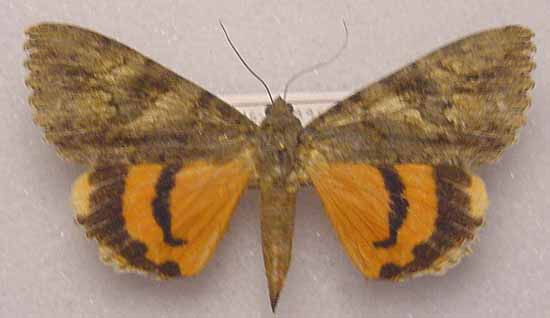
Catocala jessica Garden Cyn, Huachuca Mts, Cochise County,
AZ.
Oct 16, 1998. L. Muller, collector, given to Kelly Richers
by Ron Leuschner.
The forewing is bluish grey with some brown scaling. The am line is irregular and meets the inner margin almost at the midpoint.
The pm line has one of the upper teeth produced, while the second is much less so. The third is little more than a sharp point
on a smooth curve to the fourth tooth which is somewhat produced over the opening of the large subreniform spot.
The reniform spot is double and dark in a darker region of the median area.
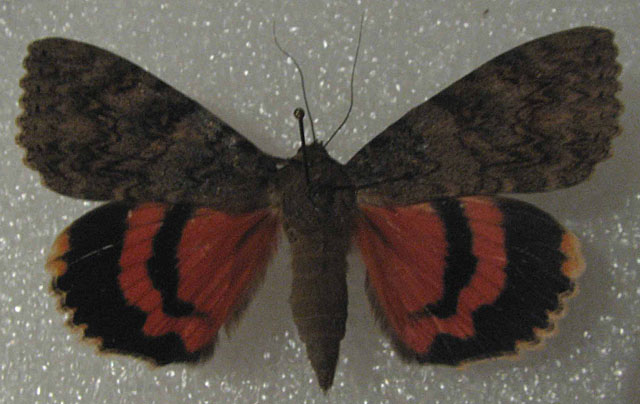
Catocala jessica, Washington Park, Gila County, Arizona,
75mm, June 12, 2010, 5800m, courtesy of Evan Rand.
The hindwing black medial band is relatively straight and narrow with a turn toward the inner margin, but it truncates quickly.
The hindwing fringe is heavily checked along the wing veins.

Catocala jessica, John Peacock,
on my home computer only.
FLIGHT TIMES AND PREFERRED FOOD PLANTS:
Catocala jessica are on the wing from June until August, possibly into October.
The Catocala jessica caterpillar feeds on poplars and willows.

Catocala babayaga = jessica, Arizona, courtesy of Bruce Walsh.
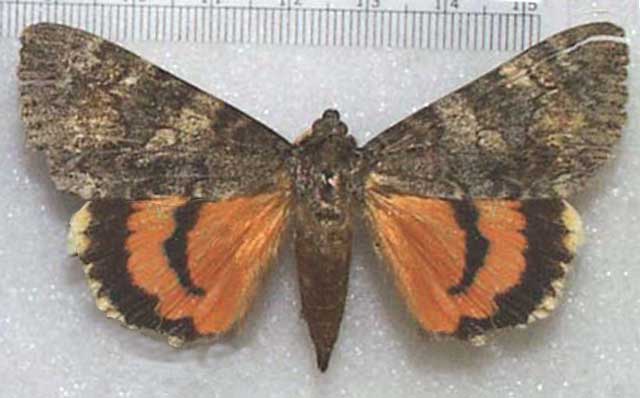
Catocala babayaga = jessica, Arizona, courtesy of Bruce Walsh.
ECLOSION:
Adults eclose from pupae at soil surface.
SCENTING AND MATING:
Catocala jessica females
emit an airbourne pheromone and males use their antennae to track the
scent plume.
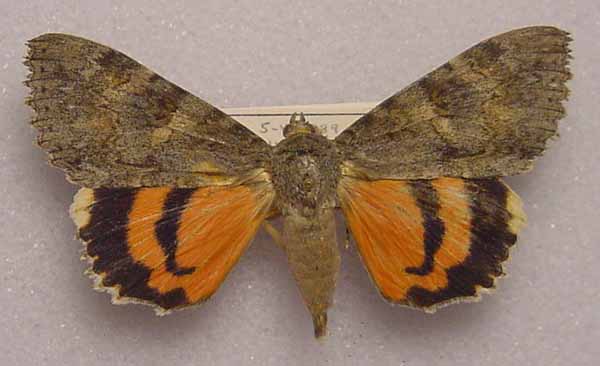
Catocala jessica, Olive Drive area, Bakersfield, Kern County,
California, 400'.
June 15 1988, Kelly Richers collector, at
houselight.
EGGS, CATERPILLARS, COCOONS AND PUPAE:
Eggs are deposited
on tree bark in the fall and hatch the following spring.
The camouflage characteristics of the larvae are amazing.
Dr. Wayne H. Whaley writes, "Attached find two photos of
Catocala jessica. I photographed these
yesterday (5/2) on aspen. The caterpillar is 4 cm long and as you
can see (or cannot see) it is highly camouflaged against aspen when
resting.
"They flatten themselves against the branches as I have noticed most
Catocala species do when they are not feeding. I will try to send
5th instar larvae photos later, and adults when these eclose. These
two represent lateral and dorsal shots. I will send one more, a
more distant shot in another email."
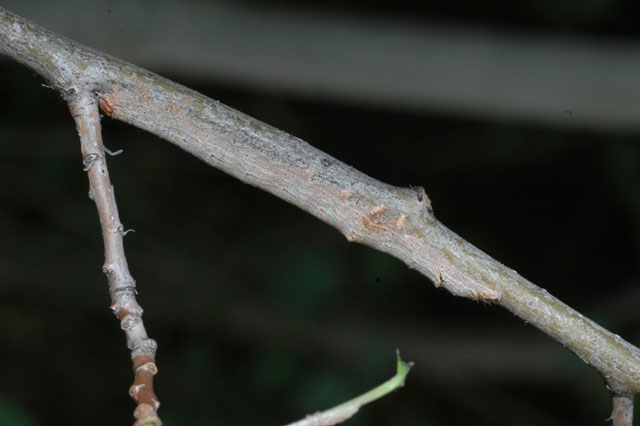
Catocala jessica, fourth instar, Utah, courtesy/copyright of Wayne Whaley.

Catocala jessica, fourth instar, Utah, courtesy/copyright of Wayne Whaley.

Catocala jessica, fourth instar, Utah, courtesy/copyright of Wayne Whaley.
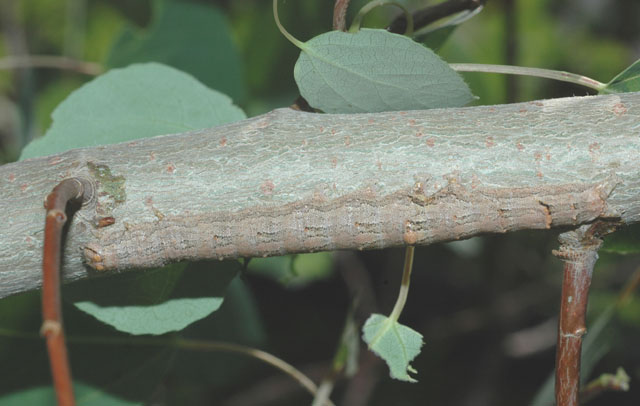
Catocala jessica, fifth instar, Utah, courtesy/copyright of Wayne Whaley.

Catocala jessica, fifth instar, Utah, courtesy/copyright of Wayne Whaley.
Concerning the above images, Dr. Wayne H. Whaley writes,
"Here are two photos taken 15 May of Catocala jessica 5th
instar, one dorsal view and one lateral view resting on an aspen
branch. This specimen is 6 cm long. As you see they flatten out
nicely to blend more with the substrate. They are sometimes very
hard to see when resting, and I have several times inadvertently
placed my hand on one when removing a sock."
Larval Food Plants
Listed below are primary food plant(s) and alternate food plants.
It is hoped that this alphabetical listing followed by the common
name of the foodplant will prove useful. The list is not exhaustive,
although some species seem very host specific.
Experimenting with closely related foodplants is worthwhile.
Populus.......
Salix
|
Poplar
Willow
|
This page is brought to you by Bill Oehlke and the
WLSS. Pages are on space rented from Bizland. If you would like to become a "Patron of the Sphingidae/Catocala Sites",
contact Bill.
Please send sightings/images to Bill. I will do my best to respond to requests for identification help.
Enjoy one of nature's wonderments: Live Saturniidae (Giant Silkmoth) cocoons.

|

To show appreciation for this site, click on the flashing
butterfly to the left, a link
to many worldwide insect sites. |
Return to Canadian Index
Return to Main Index













